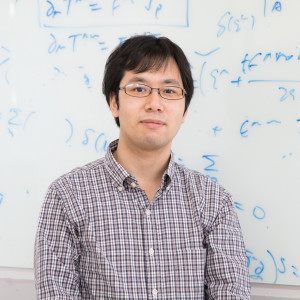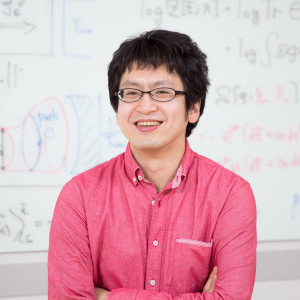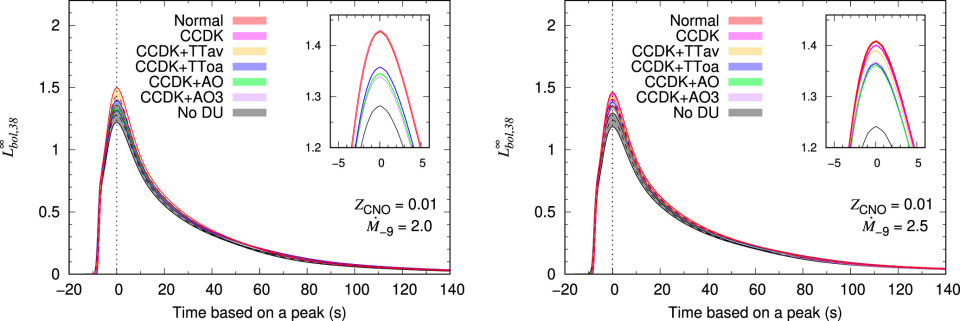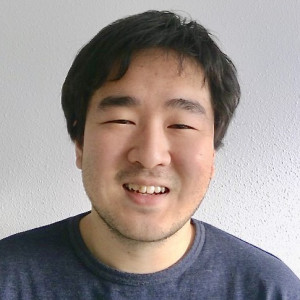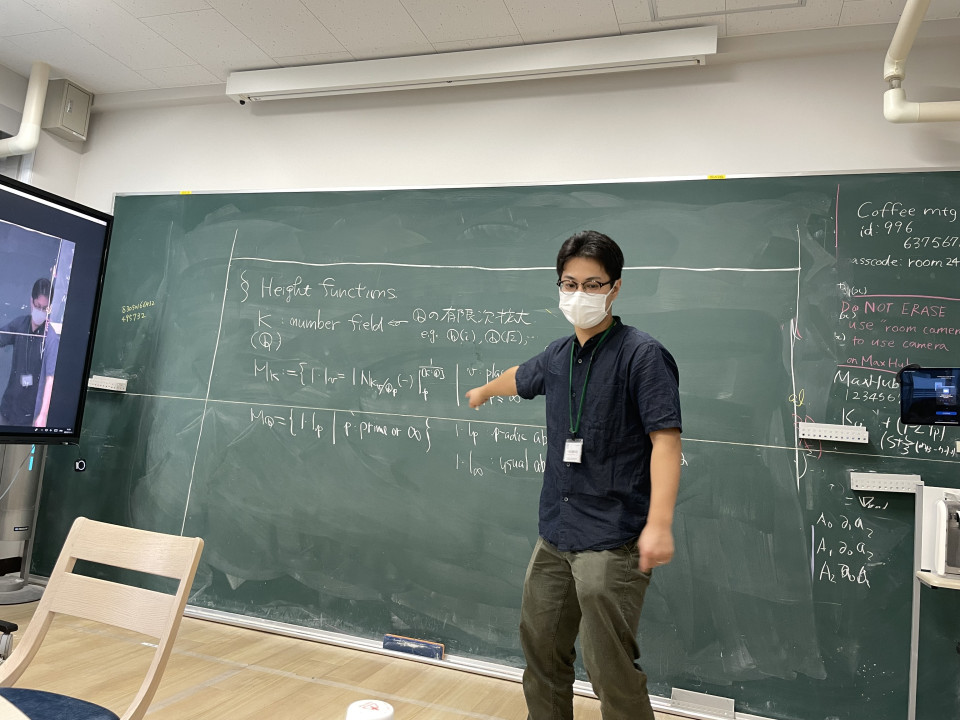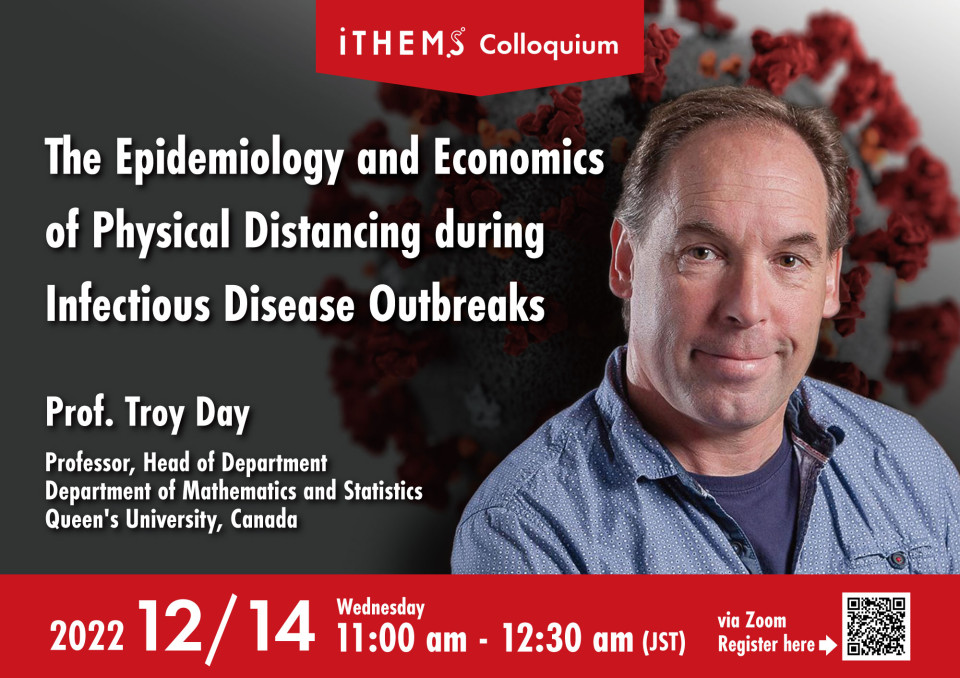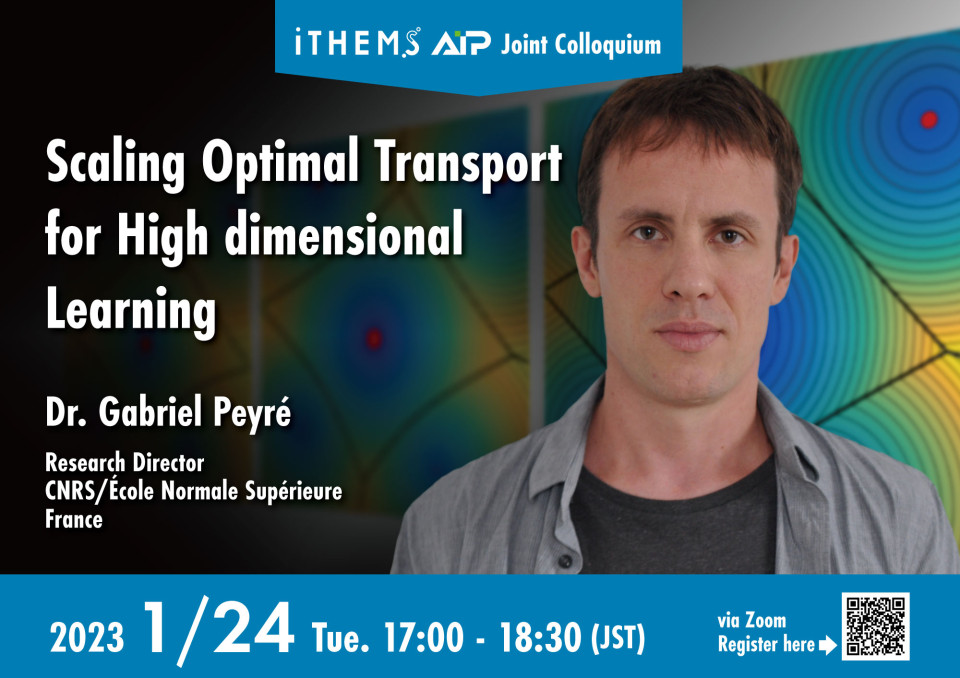Volume 228
Back to Newsletter List
Press Release
Universal Force Appearing in Quantum Fluids at Cryogenic Temperatures - Intermolecular Force in Atomic Superfluids Guided by Quantum Fluctuation
2022-12-02
The concept of "forces acting between materials," as exemplified by the universal law of gravitation, has continued to occupy an important position in physics. An international research group including Masaru Hongo (Assistant Professor, Faculty of Science, Niigata University / Visiting Scientist, RIKEN iTHEMS) and Keisuke Fujii (Postdoctoral Researcher, University Heidelberg, Germany) have revealed from theoretical calculations that the same intermolecular force known as van der Waals force acts between particles floating in a quantum fluid at cryogenic temperatures over long distances. Atomic groups cooled to near absolute zero (several tens of nano-Kelvin) by laser technology have attracted attention in recent years as a system in which quantum states can be controlled with high precision, and they are an ideal stage for investigating forces in the microscopic world. This research has newly revealed that a universal long-range force due to quantum fluctuation acts on impurity particles in atomic superfluids realized at cryogenic temperatures.
For more details, please visit Niigata University's website from the related link below.
Reference
- Keisuke Fujii, Masaru Hongo, and Tilman Enss, Universal van der Waals Force between Heavy Polarons in Superfluids, Phys. Rev. Lett. 129, 233401 (2022), doi: 10.1103/PhysRevLett.129.233401
Hot Topic
Four Perspectives on Neutron Stars, Pulsars, and Magnetars
2022-12-05
The recent work [1] on X-ray bursts from the neutron stars led by our colleague, Akira Dohi (Visiting Scientist, iTHEMS), was featured in the article "Four Perspectives on Neutron Stars, Pulsars, and Magnetars" appeared in Research highlights from the Journals of the American Astronomical Society (see related link below).
Reference
- A. Dohi, et. al., Impacts of the Direct Urca and Superfluidity inside a Neutron Star on Type I X-Ray Bursts and X-Ray Superbursts, ApJ 937 124 (2022), doi: 10.3847/1538-4357/ac8dfe
Seminar Report
iTHEMS Math Seminar by Dr. Yosuke Matsuzawa on November 11, 2022
2022-12-05
On November 11, there was a math seminar by professor Matsuzawa. He gave an introductory talk on the arithmetic dynamical system. He started from simple and interesting examples to some conjectures.
Reported by Keita Mikami
Arithmetic dynamics on algebraic varieties
November 11 (Fri) 14:00 - 16:30, 2022
Seminar Report
Math-Phys Seminar by Dr. Christy Koji Kelly on October 14, 2022
2022-12-05
On October 14, there was a joint seminar by Christy Koji Kelly. He gave an introductory talk on the rough geometry.
Reported by Keita Mikami
An Introduction to Rough Geometry (with a view to Euclidean Gravity)
October 14 (Fri) 14:00 - 16:30, 2022
Seminar Report
iTHEMS Math Seminar by Dr. Yusuke Aikawa on November 18, 2022
2022-12-05
On November 18th, Yusuke Aikawa, from Information Technology R&D Center, Mitsubishi Electric Corporation, gave a talk in Math Seminar.
In the first part of the talk, he made a general introduction to the public key cryptography and its historical development. In particular, he explained that a large-scale quantum computer can break today’s public key security systems.
In the second part, he explained the recent attempts to create public key systems which are not easily breakable by quantum computers (so called post-quantum cryptography), with an emphasis on the methods which use elliptic curves. An elliptic curve is an algebraic curve which admits a group structure, and one can form a cryptography by using this group structure. The speaker also explained his recent joint work on a generalized methods which uses abelian varieties, which are higher dimensional algebraic varieties admitting group structure.
Reported by Hiroyasu Miyazaki
Mathematics of Post-Quantum Cryptography
November 18 (Fri) 14:00 - 16:30, 2022
Upcoming Events
Seminar
iTHEMS Theoretical Physics Seminar
Chiral effects on lepton transport in core-collapse supernovae
December 13 (Tue) 13:30 - 15:00, 2022
Di-Lun Yang (Assistant Research Fellow, Institute of Physics, Academia Sinica, Taiwan)
Dynamics of leptons such as electrons and neutrinos play an important role in the evolution of core-collapse supernovae (CCSN). Nevertheless, chirality as one of fundamental microscopic properties that could affect lepton transport, through e.g. weak interaction, has been mostly overlooked. In this talk, I will discuss how chiral effects such as the renowned chiral magnetic effect (CME), generating an electric charge current along magnetic fields with chirality imbalance, could result in the unstable modes of magnetic fields and inverse cascade, which potentially influence the matter evolution in CCSN and pulsar kicks. I will also show how an effective CME could be realized via the backreaction from neutrino radiation even in the absence of an axial charge characterizing an unequal number of right- and left-handed electrons.
Venue: Hybrid Format (Common Room 246-248 and Zoom)
Event Official Language: English
Colloquium
iTHEMS Colloquium
The Epidemiology and Economics of Physical Distancing during Infectious Disease Outbreaks
December 14 (Wed) 11:00 - 12:30, 2022
Troy Day (Professor, Head of Department, Department of Mathematics and Statistics, Queen's University, Canada)
People's incentives during an infectious disease outbreak influence their behaviour, and this behaviour can impact how the outbreak unfolds. Early on during an outbreak, people are at little personal risk of infection and hence may be unwilling to change their lifestyle to slow the spread of disease. As the number of cases grows, however, people may then voluntarily take extreme measures to limit their exposure. Political leaders also respond to the welfare and changing desires of their constituents, through public health policies that themselves shape the course of the epidemic and its ultimate health and economic repercussions. In this talk I will use ideas from the study of differential games to model how individuals’ and politicians’ incentives change during an outbreak, and the epidemiological and economic consequences that ensue when these incentives are acted upon. Motivated by the COVID-19 pandemic, I focus on physical distancing behaviour and the imposition of stay-at-home orders by politicians. I show that there is a fundamental difference in the political, economic, and health consequences of an infectious disease outbreak depending on the degree of asymptomatic transmission. If transmission occurs primarily by asymptomatic carriers, then politicians will be incentivized to impose stay-at-home orders earlier and for longer than individuals would like. Despite such orders being unpopular, however, they ultimately benefit all individuals. On the other hand, if the disease is transmitted primarily by symptomatic infections, then individuals are incentivized to stay at home earlier and for longer than politicians would like. In this case, politicians will be incentivized to impose back-to-work orders that, despite being unpopular, will again ultimately be to the benefit of all individuals.
This is joint work with David McAdams, Fuqua School of Business and Economics Department, Duke University.
Venue: via Zoom
Event Official Language: English
Seminar
iTHEMS Seminar
Lattice gauge theory in curved spacetimes
December 15 (Thu) 14:00 - 15:30, 2022
Arata Yamamoto (Assistant Professor, Department of Physics, Graduate School of Science, The University of Tokyo)
Lattice gauge theory is a powerful computational approach in quantum field theory. It is also utilizable for investigating quantum phenomena in curved spacetimes, such as rotating frame, torsion, and gravitational backgrounds. In this talk, I would like to overview the formulation and results of lattice simulations in curved spacetimes.
References
- A. Yamamoto and Y. Hirono, Lattice QCD in Rotating Frames, Phys. Rev. Lett. 111, 081601 (2013), doi: 10.1103/PhysRevLett.111.081601
- A. Yamamoto, Lattice QCD in curved spacetimes, Phys. Rev. D 90, 054510 (2014), doi: 10.1103/PhysRevD.90.054510
- S. Benic and A. Yamamoto, Quantum Monte Carlo simulation with a black hole, Phys. Rev. D 93, 094505 (2016), doi: 10.1103/PhysRevD.93.094505
- S. Imaki and A. Yamamoto, Lattice field theory with torsion, Phys. Rev. D 100, 054509 (2019), doi: 10.1103/PhysRevD.100.054509
Venue: Common Room #246-248, 2F Main Research Building, RIKEN / via Zoom
Event Official Language: English
Seminar
iTHEMS Biology Seminar
Chemophoresis Engine: Theory of ATPase-driven Cargo Transport
December 15 (Thu) 16:00 - 17:00, 2022
Takeshi Sugawara (Project Researcher, Universal Biology Institute, The University of Tokyo)
The formation of macromolecule patterns depending on chemical concentration under non-equilibrium conditions, first observed during morphogenesis, has recently been observed at the intracellular level, and its relevance as intracellular morphogen has been demonstrated in the case of bacterial cell division. These studies have discussed how cargos maintain positional information provided by chemical gradients. However, how cargo transports are directly mediated by chemical gradients remains unknown. Based on the previously proposed mechanism of chemotaxis-like behavior of cargos (referred to as chemophoresis), we introduce the chemophoresis engine as a physicochemical mechanism of cargo motion, which transforms chemical free energy to directed motion through the catalytic ATP hydrolysis [1]. We propose its possible role as a universal principle of hydrolysis-driven intracellular transport.
Reference
- Sugawara T., Kaneko K., Chemophoresis Engine: a General Principle of ATPase-driven Cargo Transport, PLOS Computational Biology, 18(7): e1010324 (2022), doi: 10.1371/journal.pcbi.1010324
Venue: via Zoom
Event Official Language: English
Seminar
Information Theory Seminar
Geometric decomposition of entropy production in stochastic and chemical systems
December 16 (Fri) 13:30 - 15:00, 2022
Kohei Yoshimura (Ph.D. Student, Department of Physics, Graduate School of Science, The University of Tokyo)
Entropy production is central to understanding nonequilibrium phenomena. It is known that decomposing entropy production enables us to separately treat distinct two aspects of dynamics, nonstationarity and breaking of detailed balance. In this seminar, I talk about our recent progress on geometric decomposition of entropy production in discrete stochastic systems and deterministic chemical systems. For the audience who may not be familiar with nonequilibrium thermodynamics and linear algebraic graph theory, which the latter enables us to treat the two kinds of systems at once, I would like to start with a very basic introduction. Then I explain why and how we decompose entropy production. Specifically, I mainly focus on the "Onsager-projective decomposition" we study in arXiv:2205.15227 rather than the information geometric decomposition provided in the following paper arXiv:2206.14599. Further, several physical consequences will be discussed, including generalization of Schnakenberg's decomposition stemming from cycles in a steady system, and its relation to gradient flow expressions of a master equation and a rate equation.
Venue: via Zoom
Event Official Language: English
Seminar
ABBL-iTHEMS Joint Astro Seminar
Understanding kilonova spectra and identification of r-process elements
January 20 (Fri) 14:00 - 15:00, 2023
Nanae Domoto (Ph.D. Student, Department of Astronomy, Graduate School of Science, Tohoku University)
Binary neutron star (NS) merger is a promising site for the rapid neutron capture nucleosynthesis (r-process). The radioactive decay of newly synthesized elements powers electromagnetic radiation, as called kilonova. The detection of gravitational wave from a NS merger GW170817 and the observation of the associated kilonova AT2017gfo have provided with us the evidence that r-process happens in the NS merger. However, the abundance pattern synthesized in this event, which is important to understand the origin of the r-process elements, is not yet clear. In this talk, I will first introduce an overview and current understanding of kilonova. Then, I will discuss our recent findings of elemental features in photospheric spectra of kilonova toward identification of elements.
Venue: via Zoom
Event Official Language: English
Seminar
Information Theory Seminar
Physics-informed deep learning approach for modeling crustal deformation
January 23 (Mon) 10:30 - 11:30, 2023
Naonori Ueda (Deputy Director, RIKEN Center for Advanced Intelligence Project (AIP))
The movement and deformation of the Earth’s crust and upper mantle provide critical insights into the evolution of earthquake processes and future earthquake potentials. Crustal deformation can be modeled by dislocation models that represent earthquake faults in the crust as defects in a continuum medium. In this study, we propose a physics-informed deep learning approach to model crustal deformation due to earthquakes. Neural networks can represent continuous displacement fields in arbitrary geometrical structures and mechanical properties of rocks by incorporating governing equations and boundary conditions into a loss function. The polar coordinate system is introduced to accurately model the displacement discontinuity on a fault as a boundary condition. We illustrate the validity and usefulness of this approach through example problems with strike-slip faults. This approach has a potential advantage over conventional approaches in that it could be straightforwardly extended to high dimensional, anelastic, nonlinear, and inverse problems.
Reference
- Tomohisa Okazaki, Takeo Ito, Kazuro Hirahara & Naonori Ueda, Physics-informed deep learning approach for modeling crustal deformation, Nature Communications, vol. 13, Article number: 7092 (2022), doi: 10.1038/s41467-022-34922-1
Venue: via Zoom
Event Official Language: English
Colloquium
iTHEMS Colloquium
Scaling Optimal Transport for High dimensional Learning
January 24 (Tue) 17:00 - 18:30, 2023
Gabriel Peyré (Research Director, CNRS/École Normale Supérieure, France)
iTHEMS-AIP Joint Colloquium
Optimal transport (OT) has recently gained a lot of interest in machine learning. It is a natural tool to compare in a geometrically faithful way probability distributions. It finds applications in both supervised learning (using geometric loss functions) and unsupervised learning (to perform generative model fitting). OT is however plagued by the curse of dimensionality, since it might require a number of samples which grows exponentially with the dimension. In this talk, I will explain how to leverage entropic regularization methods to define computationally efficient loss functions, approximating OT with a better sample complexity. More information and references can be found on the website of our book "Computational Optimal Transport" (see related link below).
Venue: via Zoom
Event Official Language: English
Upcoming Visitor
December 14 (Wed) 2022 - January 17 (Tue) 2023 Shinya WanajoVisiting Scientist, RIKEN Interdisciplinary Theoretical and Mathematical Sciences Program (iTHEMS) / Senior Scientist, Max Planck Institute for Gravitational Physics (Albert Einstein Institute), Germany Research fields: Cosmo-nuclear Science Visiting Place: RIKEN Wako Campus |
Paper of the Week
Week 2, December 2022
2022-12-08
Title: The density of state method for first-order phase transitions in Yang-Mills theories
Author: David Mason, Biagio Lucini, Maurizio Piai, Enrico Rinaldi, Davide Vadacchino
arXiv: http://arxiv.org/abs/2212.01074v1
If you would like to cancel your subscription or change your email address,
please let us know via our contact form.
Copyright © iTHEMS, RIKEN. All rights reserved.


